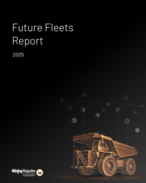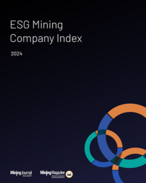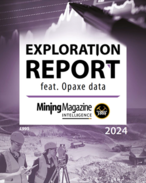This article is 18 years old. Images might not display.
When you lose good people to competitors, don't blame the hotter-than-hot employment market. Likewise, don't blame the people themselves as money-grabbers. Equally, don't blame your competitors; they are merely doing what good competitors should do – competing on all fronts.
You may be better advised to take a closer look at yourself. Why? Because whilst employee loyalty may still be alive and well in the current business climate, there are a number of key business elements that must be kept right in order to maintain it. Unfortunately for many companies, these very same elements often go missing in action.
I can speak from personal experience in this regard (having had a few different jobs over the years – although no doubt my assumption of always being one of the "good people" is a very bold one). But personal experience aside, I expect that the key points below will strike a chord with you too. Did you leave your last job simply because of the money? I doubt it. Then read on.
So you want to keep your best staff as an employer? It's easy: Just satisfy the following four elements*.
(1) Give your staff a purpose to believe in. This one is really a no-brainer – yet is sadly lacking in many firms, whether mining, exploration or otherwise. People respond to a challenge. So give them a shared one. Many companies have no clear vision of what they are actually trying to achieve – whether at corporate level or asset level. Ask yourself which you would rather work for. A company that has a blatant aspiration – and mere survival can be a compelling one in tougher times – or a company that is going to do "something" but in the mean time you are advised to just turn up for work and do your job today anyway. For me, I prefer the former: Academic research studies agree.
(2) Build decent reinforcement systems. This one is basic too. Yet even when it is present, it is not always transparent. (By "reinforcement" by the way, the HR practitioners mean some form of incentive to do the right thing – to get out of bed with a clear goal in mind). I expect many of you have worked in jobs where it didn't really matter too much whether you put in that extra yard each day; you'd get paid anyway. But human nature is such that a workforce prefers a clear goal to shoot for – a lofty target that is possible to achieve. The kickback is that when they make it, the rewards need to be significant – else you can forget an ongoing commitment. The same holds true whether your frontline staff members are truck drivers or exploration geologists.
(3) Allow your people to learn. Any HR manager will tell you that the majority of turnover is not driven by better pay (although that is obviously one factor). Most people leave for better career opportunities. They find places where they can learn more – and take greater responsibility, than in their present role. So why not give people the chance to grow now? When staffs down the line begin to leave in droves, ask yourself whether you have given them ample opportunity to learn. Chances are that those that have left will have foregone several training opportunities in the last year in order to "get the job done". Later of course, they realise that they were used by the company – and that their career (and ironically their worth to the company) would have been better served by actually turning up to that development course after all.
(4) Walk the Talk. There are few things more compelling to an employee than line managers who live and breathe the job – those who clearly show a passion for achieving great results and delivering upon commitments. But as a senior manager, how many times have you worn your heart on your sleeve about decisions "on high" with which you have disagreed? In such a case, your job is actually to have fought your case upwards and to try to win – to get the top brass to see that they got it wrong – not to show your frustration to your troops and in the process kill off their enthusiasm for the job at hand. It's simple really: As a manager, do not get mad – get even as they say.
So how did you and your company stack up? Did you score four out of four? If not, your competitors might be about to eat your lunch – or at least your staffs might soon be eating their lunch somewhere else.
Allan Trench is Adjunct Professor, Mineral Economics, at the WA School of Mines and a non-executive director at Pioneer Nickel and Navigator Resources. He leads independent business analysis of the global copper industry for CRU group (allan.trench@crugroup.com).
*With due acknowledgement to Lawson & Price (2003); McKinsey Quarterly.























